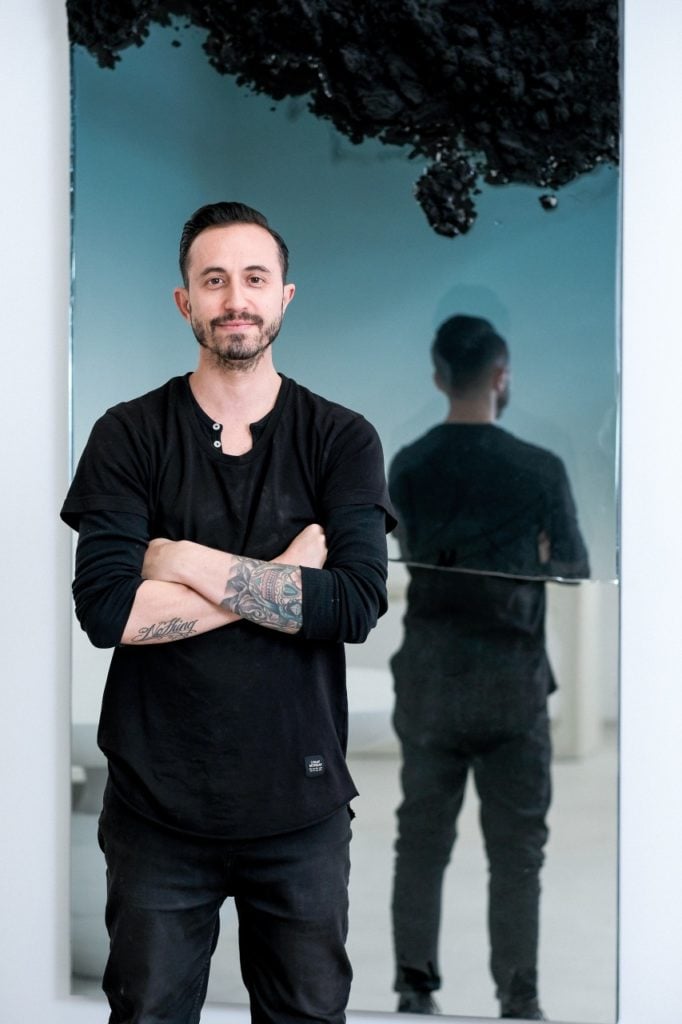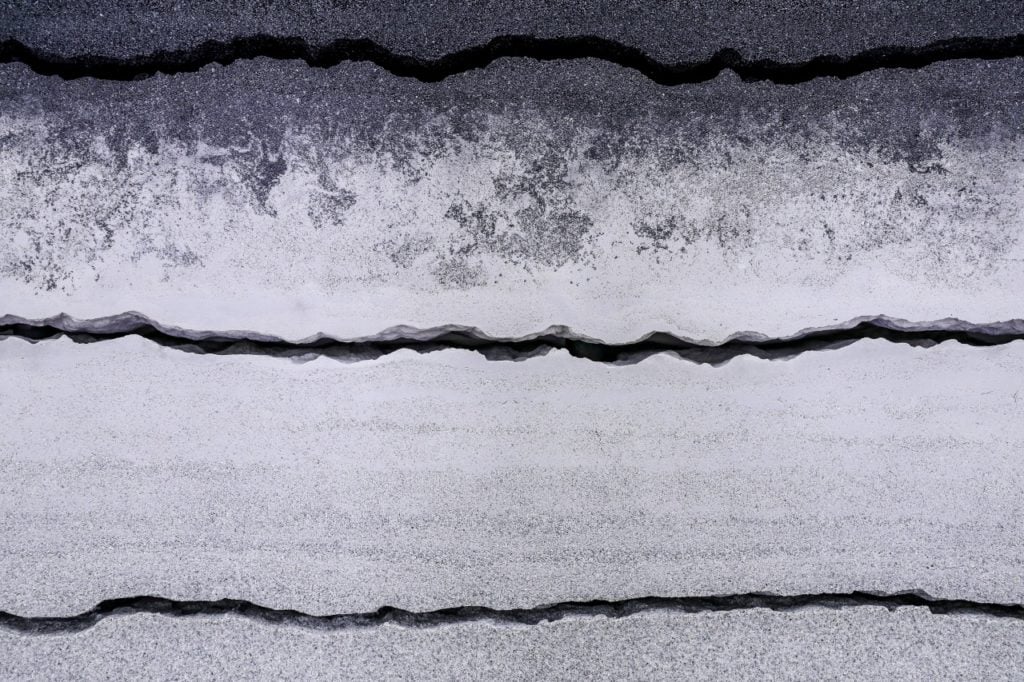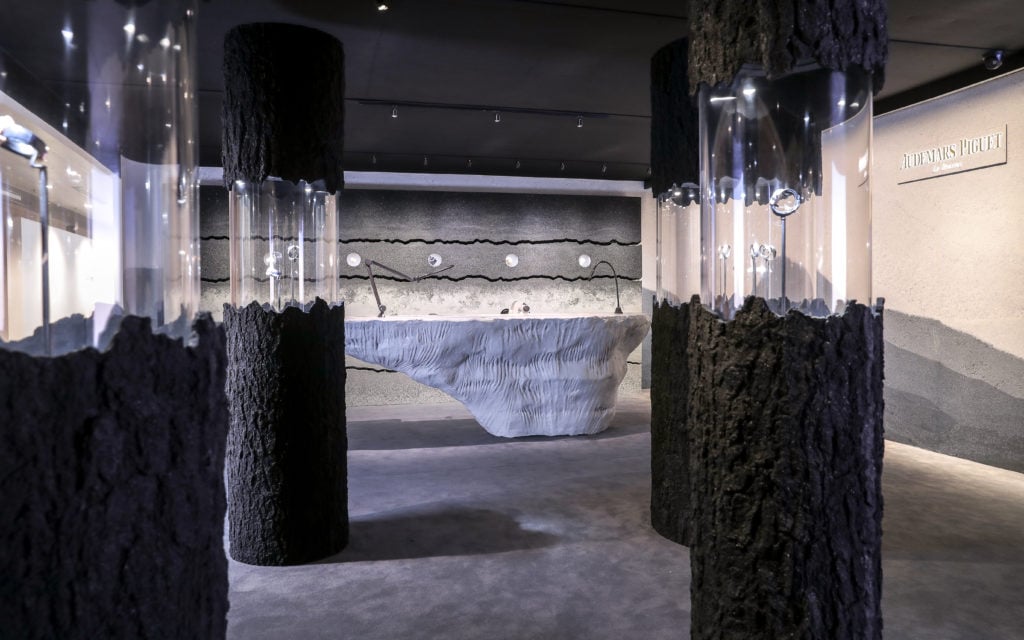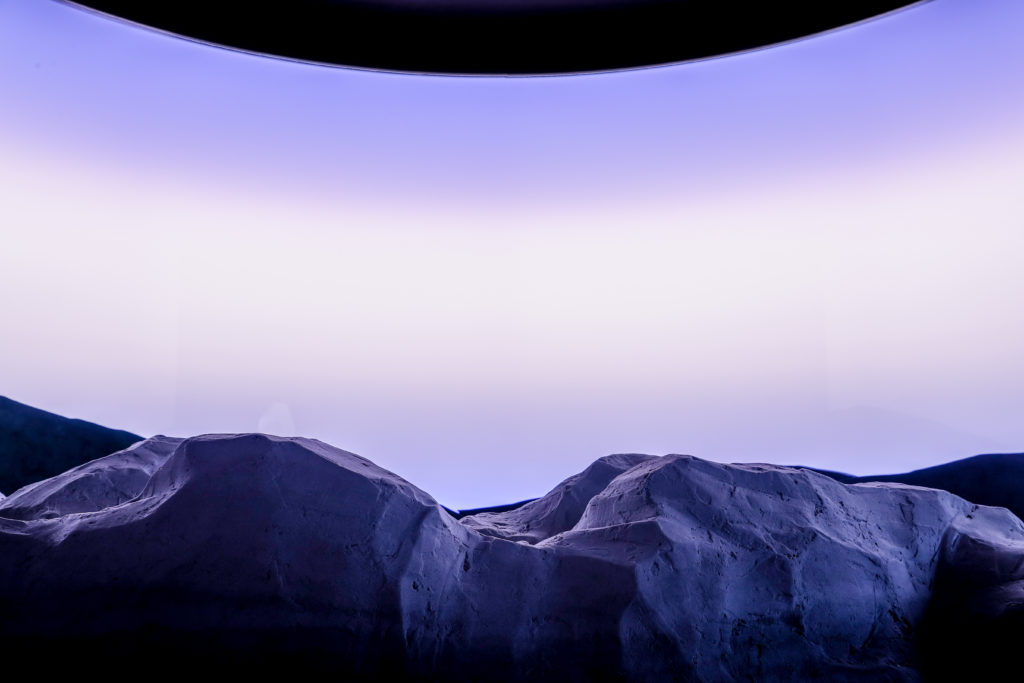Art World
‘A Sense of Beauty and a Bit of History’: What Artist Fernando Mastrangelo Hopes Viewers Take Away From His Striking Lounge at Art Basel
Mastrangelo made several site visits to the Swiss Jura Mountains to prepare for his work.

Mastrangelo made several site visits to the Swiss Jura Mountains to prepare for his work.

In Partnership with Audemars Piguet

How does the earth keep time? For Brooklyn-based sculptor Fernando Mastrangelo, that was the question that sparked inspiration when Swiss watchmaker Audemars Piguet tasked him with conceiving a lounge design that reimagined the company’s geographical, cultural, and historical origins in the Swiss Jura Mountains for all three shows of Art Basel 2019, in Hong Kong, Basel, and Miami Beach.
Mastrangelo—who is best known for his sculptural furniture created from mass quantities of natural granular materials such as sand, salt, and silica—decided to look to the natural environs of the Vallée de Joux for the answer. During several site visits, he examined how time left its marks in caves, mountain ranges, and trees, becoming enamored by the slow-moving beauty of the region’s geological evolution.
Sourcing materials from these sites, he reinterpreted his findings this week for the lounge in Basel. There, visitors can enjoy the “strata wall,” which recalls an expanse of the Vallée de Joux’s layered geological landscape, built from sand, rock salt, silica, and limestone; a chandelier made from crushed glass (an ode to the limestone stalactites found in the Swiss Vallorbe Caves); a peaceful, “escape” or relaxation area that features a digital reproduction of the Vallée de Joux’s sunset; and tall pillars speckled with washes of earth-colored sand and silica that encase the watchmaker’s new collection, Code 11.59 by Audemars Piguet. Together, the pillars form a kind of “forest” that reminds Mastrangelo of his walks through the woodlands of Swiss spruce trees.
Below, we spoke with Mastrangelo about the inspiration for his project and what it was like working with Audemars Piguet to realize his vision.

Mastrangelo’s Strata Wall features life-like rock fractures. Image courtesy FMS Presents and Audemars Piguet.
Tell me about how Audemars Piguet approached you for the project.
Audemars Piguet was looking to find new designers to conceive a lounge that could express the origins of the brand, in their own, unique ways and voice. Ultimately, it was a selection process, for which I had to submit a proposal where I designed a preliminary idea for the space. I was competing with two other designers to land the project. After a few months, I was chosen for the commission and I went to the Vallée de Joux, where their Manufacture is located, and where I really got to see the entire culture of the company and its origins.
This was the first occasion for which you used time as a theme for your work. What were the challenges of creating something around that concept?
Time was definitely a new element for me to consider for this installation, so I tried to think about it in the larger sense, in a geological sense. Trees, caves, strata layers, rocks—these all take an extreme amount of time to form. The digital sunset element of the project, which passes through the rock installations, will give people a sense of time passing while watching the colors change. The space is about creation and how long things take to become perfect and elegant. It serves as a metaphor for Audemars Piguet, too, and for things I think about a lot.

A view through the “spruce tree forest” Mastrangelo made for Audemars Piguet’s Lounge at Art Basel. Image courtesy Audemars Piguet.
You’ve said in the past that materials are metaphors, and you’ve worked with many different materials that illustrate, quite literally, the themes you’re interested in. What materials, in this new project, stand in for the concerns you’re dealing with?
I worked for the artist and sculptor Matthew Barney right out of grad school, and I was always a huge admirer of his work. He often used materials as metaphors. His work is part of the same line of thinking as Joseph Beuys’s “material as metaphor” idea. I’ve continued this tradition as the focus of my practice, so I always try to have three elements in harmony: form, content, and materials. That’s how I came up with this practice, and it has been the central thesis of my work ever since.
I’m not using one specific material for a stand-in for time, but I’m leaning more on materials that represent it: layers of strata that take millions of years to form, trees that are hundreds of years old, and a lighting installation that resembles the sunrise and sunset, all of which deal with time in a more conceptual sense.

The sunset projection in the “escape lounge” at the fair. Image courtesy Audemars Piguet.
What were your main inspirations for the piece?
The history of how Audemars Piguet came to be has a lot to do with its location. In other words, the company would not have emerged without very specific conditions in nature. That was central to my inspiration, because I often try to make those connections in my own work as well. Ultimately, I wanted the lounge to really reflect Audemars Piguet’s origins and their heritage, while also making it visually stunning, which is something I strive for in all my work.
How are visitors and viewers meant to perceive the project?
I want them to feel like they’re being transported to the Vallée de Joux in the Swiss Jura Mountains. I want them to be in wonder about what things are made of, and explore the escape room in the lounge, where they can watch the sunset. If the viewers are engaged visually, I’m hoping they walk away with a sense of beauty and a bit of the history of Audemars Piguet, too.